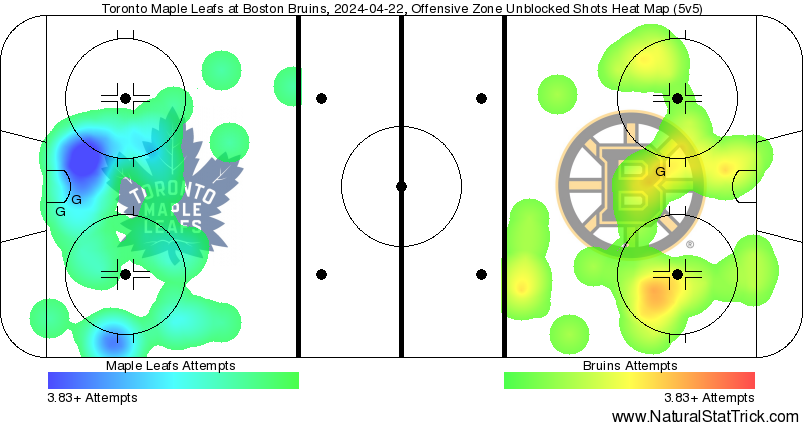There’s a world in which David Pastrnak’s goal in the waning seconds of the first period in Game 2 on Monday served as a knockout blow for Boston in its Stanley Cup playoff first-round series with the Maple Leafs.
No one expected it to be that easy, though, did they? Certainly not with the way things have gone with these teams in recent years.
The Bruins took a 2-1 lead to the dressing room for the first intermission, but Toronto got off the mat and fought back on the way to a 3-2 win. The series is evened at a game apiece, tilting home-ice advantage in favor of the Leafs as they return home.
Ultimately, the game could have gone either way, as evidenced by the final score. However, the Leafs were certainly the better team, and Boston’s inability to ride that first-period momentum cost them.
Story continues below advertisement
Looking at Game 2 over the course of the entire 60 minutes tells a disheartening story for the Bruins, and Jim Montgomery made it pretty clear he sees obvious areas of improvement.
“I didn’t think our urgency was where it needed to be to prevail (in Game 2),” the Bruins coach told reporters after the game. ” … I didn’t think puck management was a detriment to us, (but) I just don’t think we won enough wall battles to get out of our end successfully.”
Both teams registered 24 shots on goal in five-on-five play, but a closer look at where those shots came from reveals Toronto got the better of its chances. The Leafs were in Bruins goalie Linus Ullmark’s face for much of the night. According to Natural Stat Trick, the Leafs more than doubled up on the Bruins with 27-12 edge in five-on-five scoring chances.

When the series shifts to Toronto on Wednesday, the Bruins will have to do a better job of getting to the front of the net, putting the pressure on the Maple Leafs’ average-at-best defense corps and obstructing the vision of Toronto goalie Ilya Samsonov. However, it’s a little more complicated than just camping out in the crease. It’s not that easy.
Story continues below advertisement
More bruins
Montgomery lamented the Bruins’ ability or willingness to win puck battles in their own end, and those defensive struggles are directly tied to a lack of high-danger offensive chances.
“I think it’s a function of they’re defending well,” Montgomery conceded but added, “it’s also a function of us not playing fast enough. We’re slow in transition which is not allowing us to possess pucks and not allowing us to get in on the forecheck enough.”
You don’t have to go back far to find examples of what Montgomery is talking about. The Bruins scored on their first shot of Game 1, the result of brilliant 180-foot play. Defenseman Hampus Lindholm started a play in his own end with a strong play along the wall when he knew he was going to get hit. He moved the puck up the wall where defenseman Andrew Peeke also took a hit to move the puck up the wall. Pat Maroon then made the key play, despite being in the middle of a Toronto sandwich, shoveling it to Jesper Boqvist. He then took off down the ice where he ultimately found John Beecher for the series’ first goal.
Boston’s second goal in Game 1 came from similar transitional offense.
Story continues below advertisement
Defense leading to transition, leading to a top-tier offensive chances that the Bruins buried. It’s pretty simple stuff, but it makes all the difference in the world.
Quite frankly, the Bruins struggled to do that at points in Game 1, too, a game that played a lot closer than the final score indicated. Boston cashed in on its power-play chances, though, taking full advantage of an undiscplined opponent. Those trends flipped in Game 2, and the Bruins struggled to find the net.
These series are often won by the teams who make the best adjustments. Now it’s on Boston to find a way to take Montgomery’s critiques and turn it into opportunity.
Story continues below advertisement
Featured image via Bob DeChiara/USA TODAY Sports Images

















